We were lucky to catch up with Betsy Busche recently and have shared our conversation below.
Alright, Betsy thanks for taking the time to share your stories and insights with us today. It’s always helpful to hear about times when someone’s had to take a risk – how did they think through the decision, why did they take the risk, and what ended up happening. We’d love to hear about a risk you’ve taken.
Studying art in college, I realized that I could not translate what was in my head to the paper or canvas the most art students do. My brain just doesn’t work that way, so I gravitated toward photography. At one point I started ripping images apart and fell in love with collage. My process is very much about taking what I have and creating something beautiful from the pieces. This is when I embraced designing with found objects.
I always enjoyed flowers, to the point I would help out a local florist unpacking and conditioning flowers before weddings. This was the 90s so it was all white roses, baby’s breath and leather leaf ferns. I once asked why no other flowers and was told that this what sells. That squelched my florist ambitions.
I never took a big risk in floriculture, but bounced around in my career in community organizing for years dipping my toe back in a few times. I took a greenhouse course at an agriculture college, but still everything was based on imported flowers and that certain aesthetic that I found old and boring. Then I got married and our friend’s mom created two huge urns for the ceremony from flowers from her garden. It was an incredibly kind gesture and a wake up call.
At this point I knew what I liked and was learning how to grow the flowers necessary to create the wild and messy designs I loved. The trends caught up and the style of our wedding is so common now. The five most popular florist flowers cannot be grown in upstate New York, but once I started to seek out cut flower varieties, I discovered 80 varieties that bloom over four months of blooms I can grow in my fields.
So here is the risk I took living and working in a small town in the middle of Upstate New York. I concentrate my abilities offering on everything as “designer choice.” I will consider color as possible, but ask my customers to trust me to make the prettiest arrangement possible based on the best flowers I have access to at a time. This is not really different than the flower wire ordering system that dominated the market for decades, customers just get less color choice. Men are happy with just choosing a dollar amount and me delivering what is special that day.
I did not invent this model of selling, but adapting it to my region has been a challenge. Flower expectations are very generational. Millenials favor houseplants over cut flowers, those younger are fascinated by flowers that look like something, ie gladiola look like giant orchids or The most intimidating arrangement for me now is for a funeral. Baby boomers tend to have very specific flowers in mind, almost always yellow roses. We cannot grow typical florist roses here. So I would be required to buy them in bunches of 25 from a wholesaler. At this point I would need to educate my customer about what I can grow and offer, but I’m not about to do that to someone who is in mourning. I usually pass these customers off to more traditional florist within a 30 mile radius. The catch 22 is that traditional florists are aging out and retiring. It’s a weird dynamic I’m not ever sure I’m balancing well.
This past summer, our village sponsored a historical house tour and one of my neighbors hired me to fill their house with flowers. We discussed the staging of every room down to place settings in dining room and the tall vases in the parlor overlooking the gardens. It is on my top five of most creative projects ever. In the process of designing, I caught myself trying too hard to make it look like the flower farmer aesthetic and had to back off to let the flowers land as they wished. I ended up filling a large vase with a base of hydrangea then filled with sunflowers with some gold celosia accents for the island in the kitchen. The simplicity of the two huge flowers hanging out together became the focal point as everyone entered from the side garden. Being trusted to fill their vases with my flowers was a privilege I will never forget.
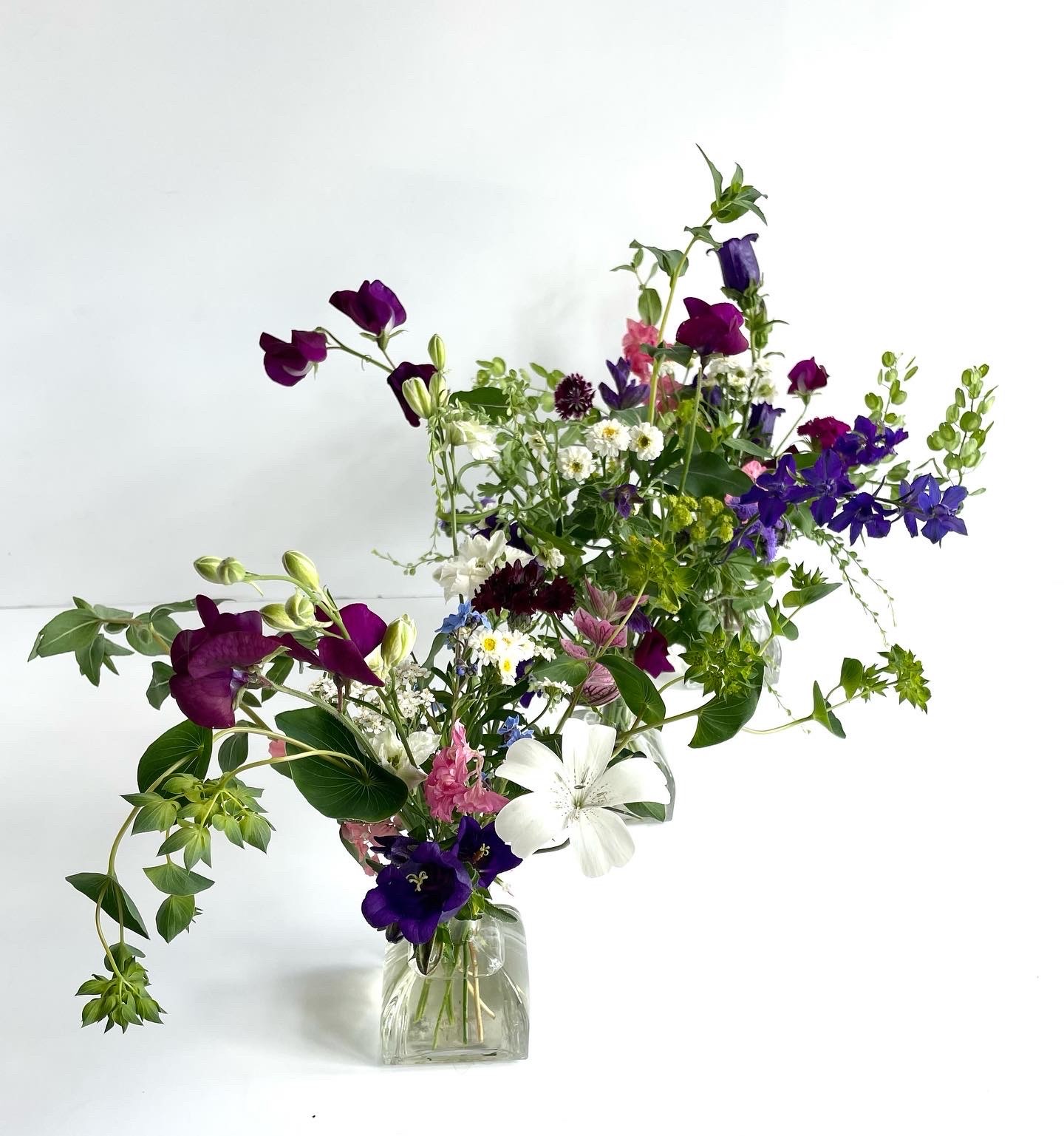
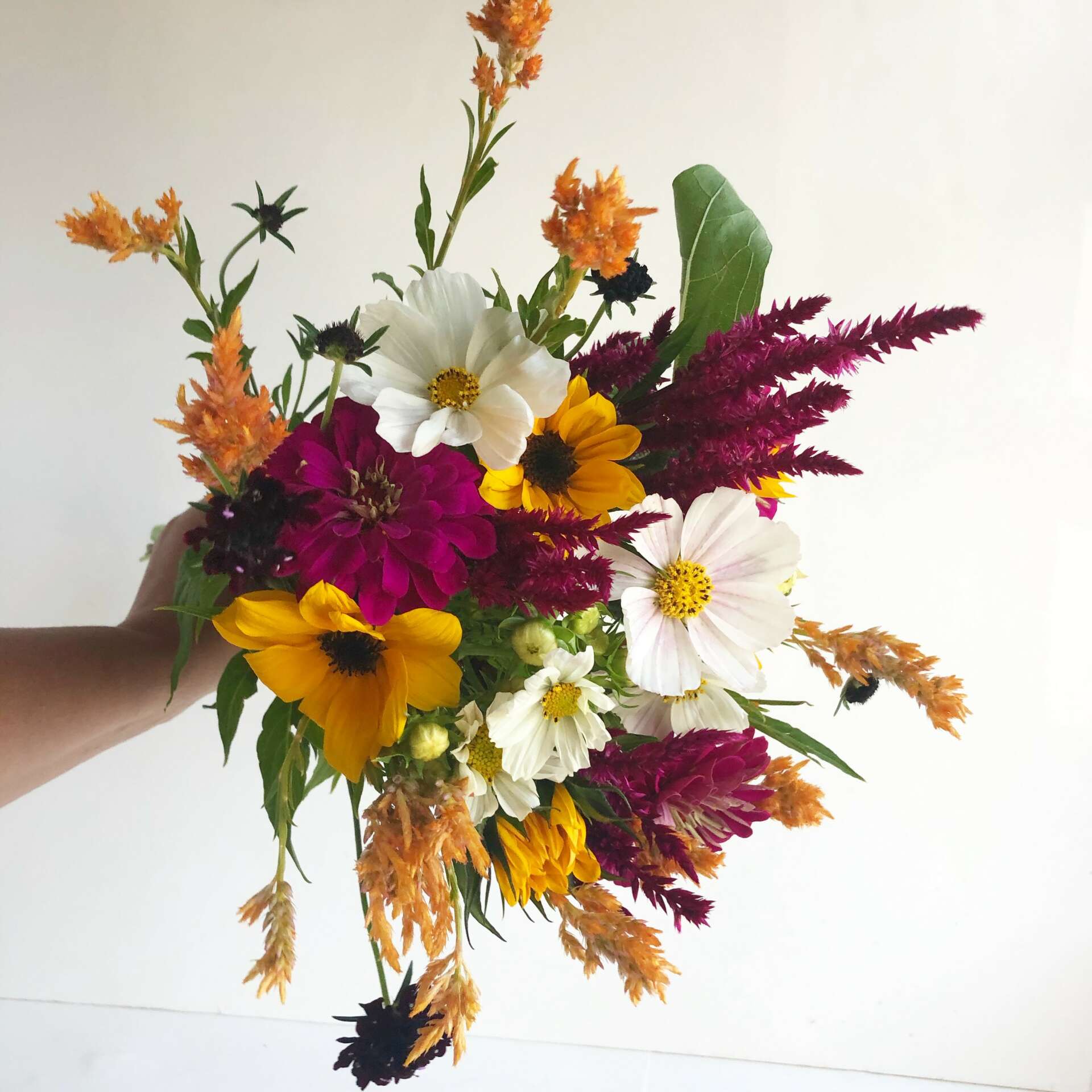
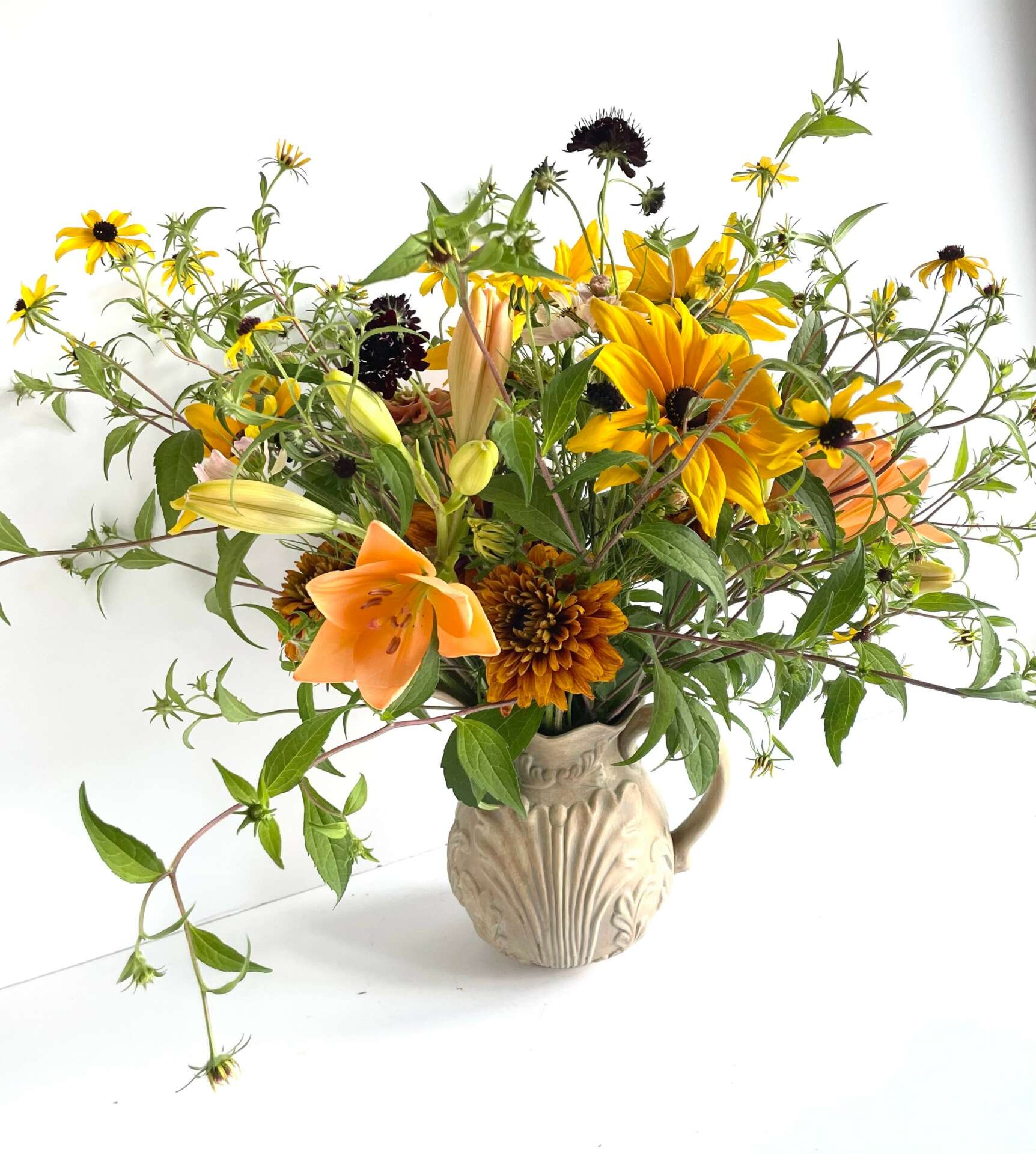

Betsy, love having you share your insights with us. Before we ask you more questions, maybe you can take a moment to introduce yourself to our readers who might have missed our earlier conversations?
My husband came with a family farm and a family that believes we should be doing something good with the land. For years we grew vegetables on a relatively small scale and sent produce to the local farmers market with my mother in law. Six years ago I help out on a friend’s farm with a roadside stand. Part of my job was pick flowers each day and make bouquets. As I learned to handle the flowers, everything clicked. I knew I could grow the flowers that I wanted. The tall, stately and intricate delphinium was my gateway to growing as much so many more flowers.
From there we tilled up more plots, put up fences and expanded from sunflowers, zinnia and marigolds to so many more varieties. Two friends have let me use dormant gardens until I was growing just over an acre of 80 varieties plus two perennial gardens. At this point I turned my efforts to a nearby city, Utica, NY, as a vendor at their urban market. I was concentrating on creating mixed bouquets. Ad I grew I sold to farms stands, created a bouquet subscription, and taught basic design classes. I also take orders weekly for arrangements including for my husband club. Certain men find it helpful to give me a list of their special dates so I can contact them 10.days before to set up a delivery of flowers. It makes me feel useful.
I have a following in the region with my mixed bouquets because of my design. I create recipes to regulate stem count but also enforce a diversity of blooms that makes even the simplest flowers pop. My style is little wild but also use color blocking to hold the design together.
While this business was growing I began writing about flower farming and teaching flower farming classes. Now I’m offer as much education as I am growing.
Any stories or insights that might help us understand how you’ve built such a strong reputation?
The best resource I have for growing my customer base is showing up and letting them handle the flowers. I offer Play with Flowers where I set up a flower bar and participant make an arrangement in a vase they bring. I keep the price per person low by bringing simpler flowers. Many of my regular customers then buy bouquets and arrangements for special occassions. I played with a bunch of tag lines like “These are your grandmother’s garden flowers” but there is not enough of a connection to that idea. The discovery of how special these blooms is a five senses experience. From these events, I sell the most of DIY bulk buckets for showers or parties.
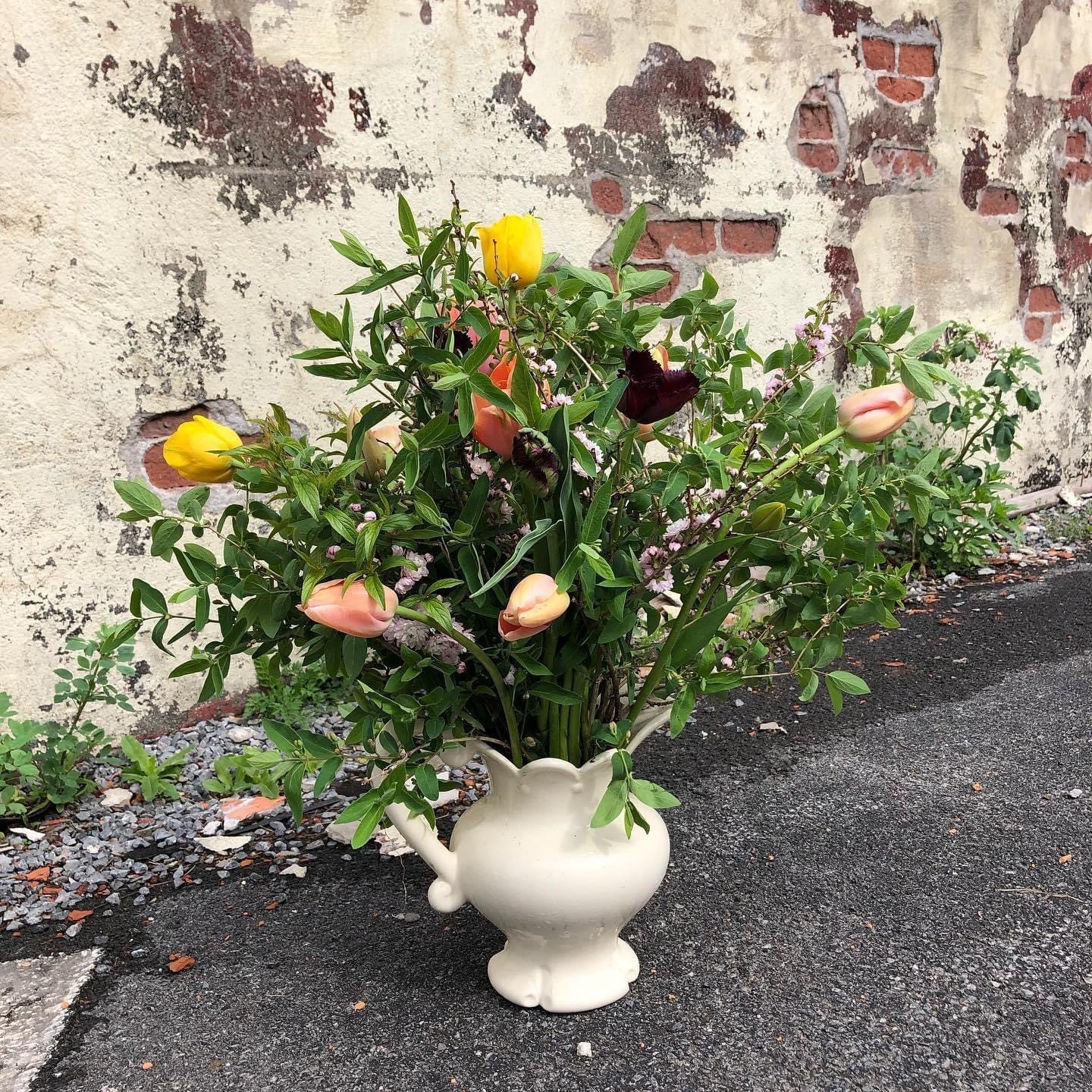

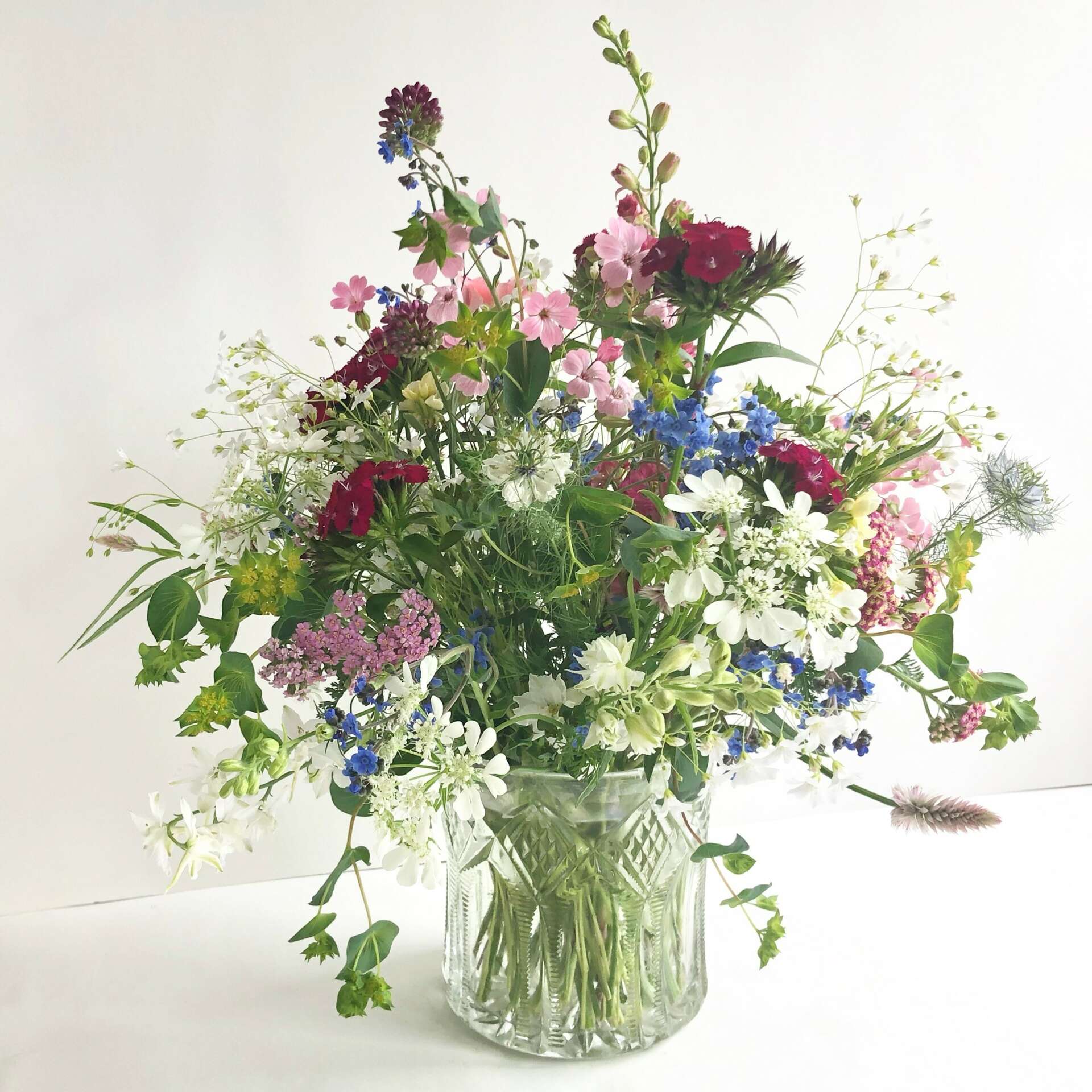
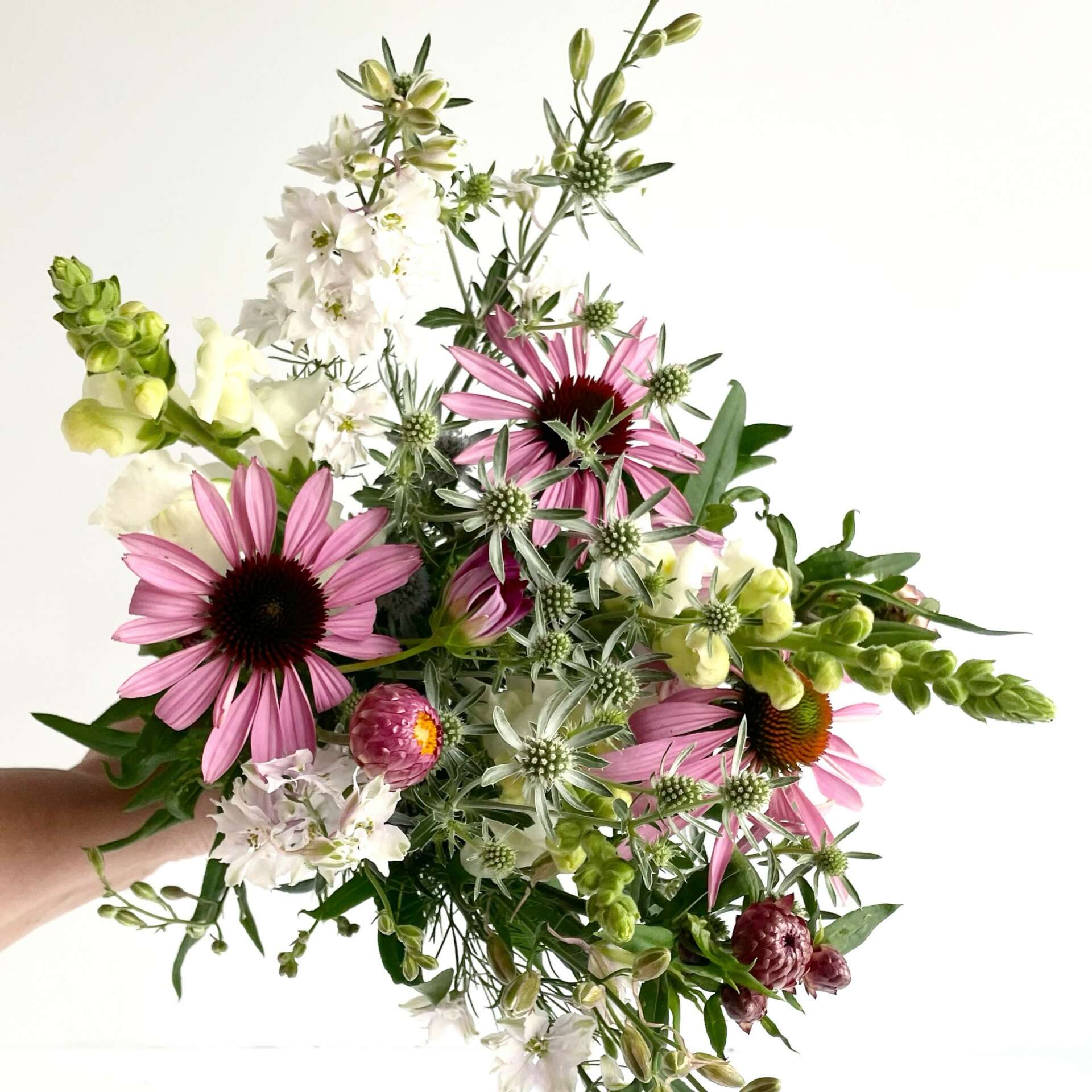
Learning and unlearning are both critical parts of growth – can you share a story of a time when you had to unlearn a lesson?
The first two years I grew cut flowers, my stems were short and I tried to sell my 10 stem bunches for $5 at a small town farmers market. Did not go well. There was even a woman who would come at the end and buy the remainders for half price. It was demoralizing.
I was not growing the right flowers the right way. A big part of my challenge was not harvesting correctly. I could not get passed the idea of cutting at a natural juncture. But really, cutting a zinnia deeply causes the next stem to grow from below that cut. Once I started to understand that every flower is different and how I need to grow and harvest each one uniquely, I started to have the right stems to create bouquets that are worth my efforts.
Once I figured out how to grow, I started to work on best practices for post harvest so the flowers have the longest vase life. That including cutting early morning or late evening, keeping everything clean, allow stems to hydrate several hours before handling, etc. New customers will ask if I cut the flower that morning. My response is, “you don’t want me to.” because the flowers need to rest. My reputation is built on bouquets that last more than a week. My husband says it is bad business since I cannot always sell one every week to each customer.
Along with all that, I had to find the markets where people will pay for the worth of the flowers. Once I found the a formula that worked I was driving around delivering less which really is the most stressful part of a flower business.
Contact Info:
- Website: www.spongettasgarden.com
- Instagram: @spongettasgarden
- Facebook: @spongettasgarden


